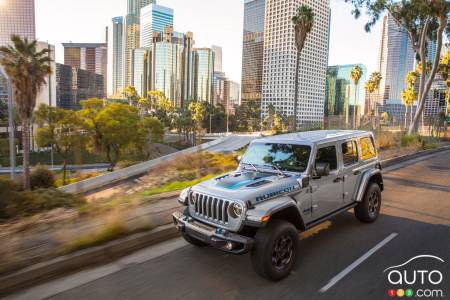• Toyota and Stellantis attack President Biden's auto pollution reduction plan as ‘too much, too fast’.
The electrification of the automotive industry is well underway. As new models hit the market monthly, governments around the world have set targets for sales of electric vehicles, reductions in pollutant emissions, and more. Automakers are racing to meet those targets.
But, perhaps, inevitably, some of those automakers are increasingly vocal that things are moving too fast. One target of their displeasure? The pollution reduction measures being implemented by the Biden administration in U.S.

As Automotive News reports, Toyota and Stellantis recently criticized a White House measure aimed at reducing automobile pollution, on the grounds that its targets would force aggressive and unrealistic sales of electric vehicles, putting a heavy burden on the mineral resources industry. The two auto giants claim that the proposed emissions reductions goals for cars and light-duty trucks are overly optimistic and discriminate against plug-in hybrids.
According to Toyota, the administration's plan “underestimates key challenges, including the scarcity of minerals to make batteries, the fact that these minerals are not mined or refined in the U.S., the inadequate infrastructure and the high cost of battery-electric vehicles.”
As Automotive News points out, these comments come against the backdrop of a difficult reality facing automakers, brought on by the most ambitious polluting emissions limits ever set by the United States. These will come into force from the 2027 model-year.
To meet the limits, the U.S. Environmental Protection Agency (EPA) expects automakers to massively increase the market share of electric vehicles to 67 percent of new light-duty vehicle sales and 46 percent of new medium-duty vehicle sales by the 2032 model-year.

Currently, all-electric vehicles and plug-in hybrids account for less than 10 percent of vehicles sales in the U.S.
The proposed standards are based on the estimation that 70 percent of the vehicles sold by automakers will produce no polluting emissions. All-electric vehicles, in other words. Other technologies can be used to help meet the targets, but electrification is central.
The new plan even surpasses the initial goal set by President Joe Biden when he took office, namely that 50 percent of light-duty vehicles should be zero-emission by the end of the decade.
Toyota and Stellantis claim that the speed with which all this has to happen deprives consumers of choice by forcing them to move to an electric vehicle, perhaps sooner than they would like.
Ford also encouraged the EPA to relax its requirements in the short term, so that the transition would be smoother as automakers work towards the proposed 2032 standards. As it stands now, the EPA will impose roughly equivalent pollution reduction standards each year. Toyota calls this proposed schedule of annual increases “extreme".

Stellantis believes the EPA's expectations for electric vehicle market growth are too optimistic and that it assumed a “perfect” transition, while underestimating challenges such as lagging production capacity and weak consumer commitment to the format. The rate of adoption of electric vehicles envisaged by the EPA “far exceeds what is supported by existing policy actions and adds significant risk to the automotive industry that must comply with these standards, whether or not these assumptions hold true.”
Toyota criticized the EPA for relying on a “superficial assessment” of the supply of essential minerals for batteries, including from U.S. deposits.
It would be foolish to dismiss these arguments being made by two of the biggest automakers in the world. At the same time, it's important to bear in mind that these automakers are currently lagging behind in the march towards electrification, - though both have made serious commitments to make up for lost time. Buying for time makes perfect sense if you’re Toyota or Stellantis.
Not if you’re Tesla, though. The EV maker has urged the EPA to act even more aggressively, given the “rapid pace of light vehicle electrification”. Given that the technology has been amply demonstrated, is being rapidly deployed and is becoming more affordable with competitive costs falling significantly, Tesla says the agency should aim for an electric vehicle penetration rate of at least 69 percent for the 2032 model-year.
We also understand its position. Tesla is ready and dominating the market; the faster electrification advances, the better for it.
In the coming years, we can expect that two entities will find themselves under the microscope as electrification advances: automakers, and consumers. Each will need the other to get on board. Expect a lot of surveys and studies.




